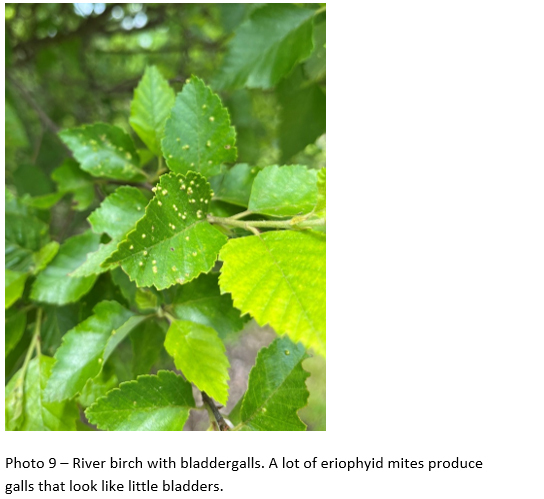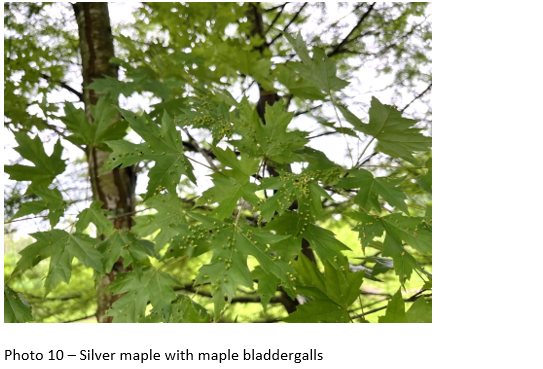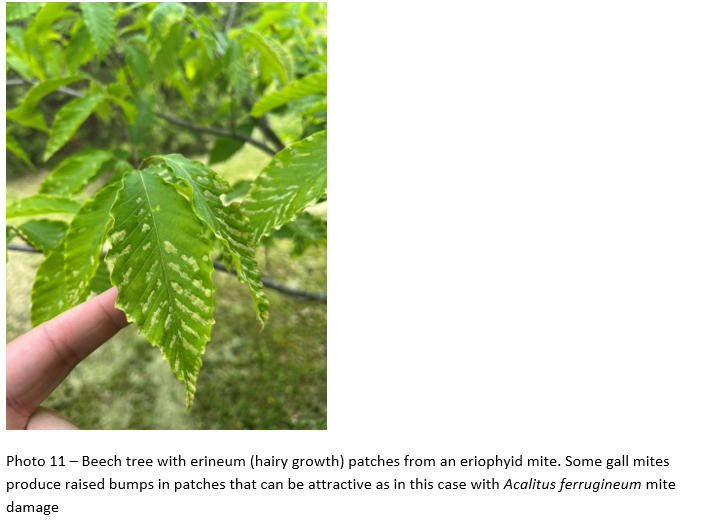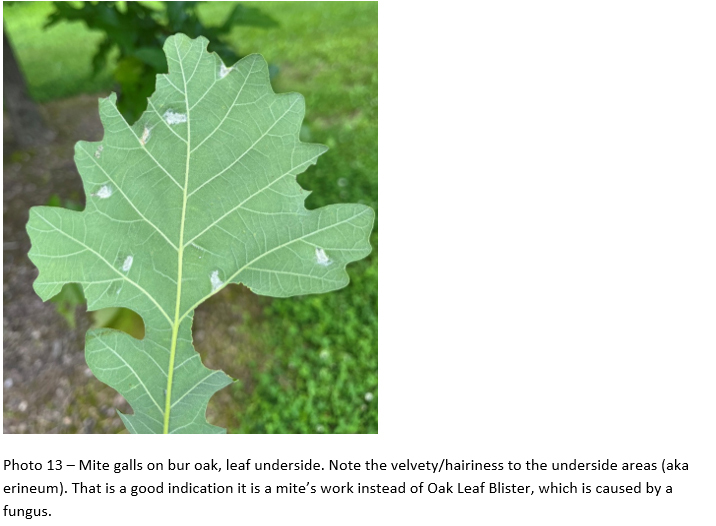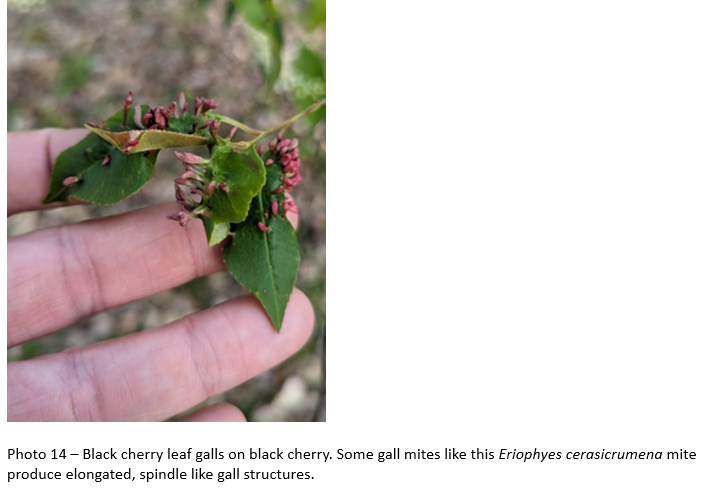This informal report by the Division of Entomology & Plant Pathology is a commentary on insects, diseases, and curiosities division staff encounter on a week-to-week basis. Comments and questions about this report are welcome and can be sent to your respective Inspector.
Our Website
Inspector Territories
Eric Bitner (Nursery Inspector & Compliance Officer) -
Be on the lookout for spotted lanternfly. Nymphs have emerged across the state. For an up-to-date map of known locations of spotted lanternfly within Indiana use this link:
experience.arcgis.com/experience/7b5fd32790554abfbf2e8f0cf464fa31.
If you have a report to make of potential spotted lanternfly within that map you can make a report or use this link: survey123.arcgis.com/share/63ac4fc9fce041188873af243d8ab43e.
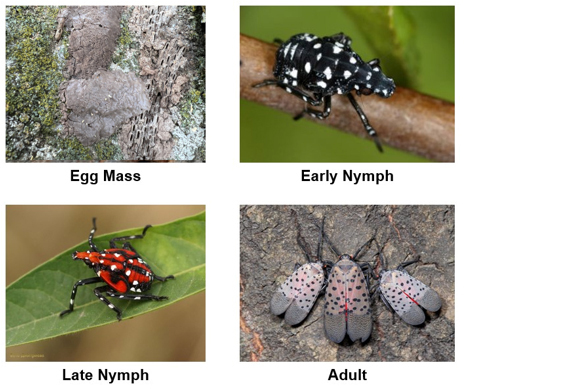
Eric Biddinger (Nursery Inspector & Compliance Officer) -
First spotted lanternfly first instar nymph found in Elkhart County. Nymphs can be a little tricky to find as they feed on the newer branches. This often puts them up higher in the canopy if there is not a lot of new growth or suckers at ground level.

Kallie Bontrager (Nursery Inspector & Compliance Officer) -
I had the chance to inspect greenhouses and some garden centers in my territory last week. I have been pleasantly surprised with how clean the greenhouses have been. Due to the cloudy and rainy weather I was expecting to see more disease issues such as Botrytis and powdery mildew. While I did see Botrytis on the normal suspects (begonia, geraniums, and impatiens), it was very localized. I saw thrips on spikes, eggplant, gerbera daisy, verbena, and calla lily. A few spider mites were seen on banana, spikes, dahlia, mandevilla and butterfly bush. I found one painted lady caterpillar on a hollyhock which is one of the hosts for that caterpillar.
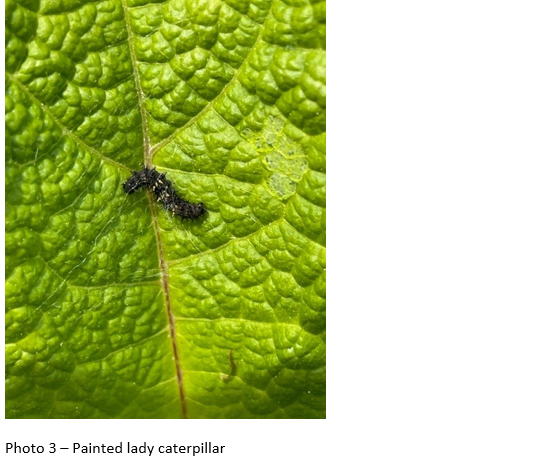
Kristy Stultz (Nursery Inspector & Compliance Officer) -
Roses are red and covered in slugs? As the weather warms up, so have rose slug sawflies. The larvae themselves may go unnoticed, but the damage is unmistakable. It doesn’t take many to do quite a bit of damage, and at least in my own garden, populations seem to be fairly high right now. Fortunately, these are the European roseslug sawfly (Endelomyia aethiops) that produces only a single generation per year. Now is the time to manage next year’s population before the larvae drop to the ground to pupate. Adults emerge in early spring to lay eggs on the underside of host material.
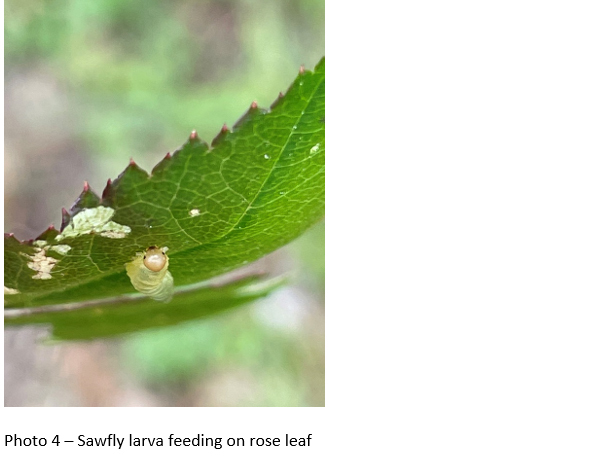
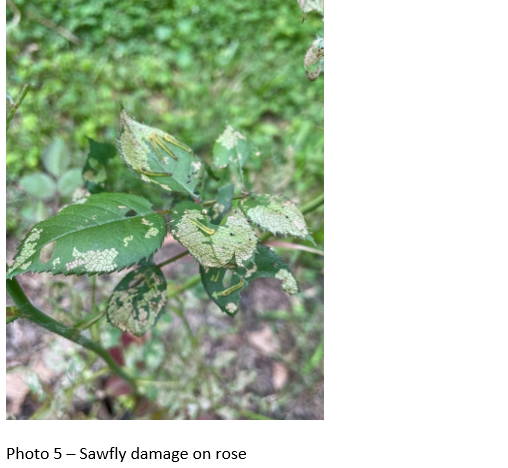
Caydee Terrell (Nursery Inspector & Compliance Officer) -

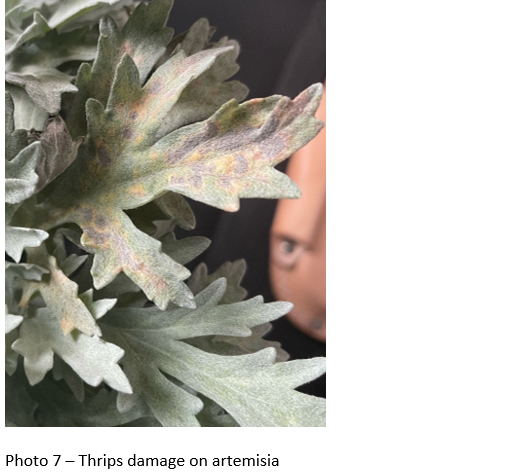
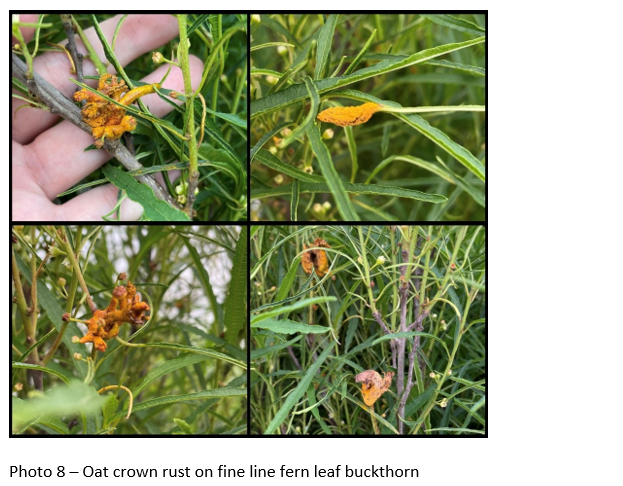
Will Drews (Nursery Inspector & Compliance Officer) -
I’ve been seeing a lot of gall-forming mite activity recently in the landscape and nurseries in my area on a variety of trees. Gall-forming mites are in the Gall Mite Family (Eriophyidae). They are microscopic little mites that feed on developing leaves of generally tree and shrub species early in the season and are often host specific to one genus or species of plant. As the adults feed on the leaves, they release growth regulators that induce the formation of interesting gall structures on the leaf surfaces.
The reason for this is two-fold: first, they get nutrients from the inner tissue in the galls, and second, they get protection from predators and environmental conditions. Then, the adult mites lay eggs in the galls and die. The next generation develops within the galls for a couple of weeks and then exit as adults. This cycle will continue until the tree stops producing new leaves for the season, generally sometime in summer. Thus, depending on the year and growing conditions, there can be several generations of gall mites in a single growing season. Once conditions are undesirable for creating new galls, the mites will find a protected spot to overwinter.
Generally speaking, the damage caused by gall mites (aka eriophyid mites) is more of a cosmetic issue than an issue actually causing serious harm to the plants. Populations of eriophyid mites fluctuates season to season and established trees should be fine without any control. However, large populations and damage on tree seedlings and newly planted trees may warrant some control. Damaged leaves can be handpicked and removed before the mites emerge or preventative treatments may be applied during the dormant season to the overwintering mites before they create the galls.
The following photos show some of the gall mites I’ve come across recently.
